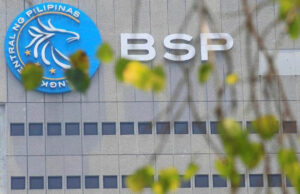THE BANGKO SENTRAL ng Pilipinas (BSP) will not raise the minimum capital requirements for rural banks in the next three to five years while the Rural Bank Strengthening Program (RBSP) is being implemented.
Monetary Board member V. Bruce J. Tolentino said it will take time for rural banks to comply with the current minimum capital requirement set by the BSP.
“We will not change the capital requirements while the program is going on for the next three to five years,” he said during a Nov. 22 event with the Rural Bankers Association of the Philippines (RBAP).
In September, the BSP raised the minimum capital requirement for rural banks to at least P50 million, as it seeks to further strengthen the local banking industry.
Under the new rules, a rural bank with a head office and up to five branches needs to have a minimum capitalization of P50 million, regardless of location.
Rural banks with six to 10 branches are required to have a minimum capital of P120 million, while those with more than 10 branches should have capital of at least P200 million.
“As of now, banks are being asked to declare whether or not they comply or not with the capital requirement. That’s the process that’s going on right now,” Mr. Tolentino said.
He added that the owners of rural banks will need to engage with their relevant examiner or with BSP officials such as Deputy Governor Chuchi G. Fonacier or Assistant Governor Lyn I. Javier to “talk things over as to what needs to be done.”
BSP Circular No. 1151 amended the minimum capitalization of rural banks as part of the RBSP.
Rural banks whose capital falls below the new minimum requirements can refer to available options under the RBSP, and submit their capital buildup plan within six months to the BSP. The rural banks are given five years to meet the minimum capital requirements.
Mr. Tolentino said many weak banks with relatively low capital are rural banks.
Low levels of capital limit a rural bank’s ability to cover costs of operation and maintenance, and the heavy cost of compliance, he said.
“The RBSP is designed to address the key issues that confront all of you, starting with a push for a stronger capital base. The capital base requirements have been stagnant for so long that they need to be attuned to the current times and the current financial landscape,” Mr. Tolentino said.
Mr. Tolentino heads the interagency working group that runs the RBSP, along with officials from the Agriculture and Trade departments.
A technical working group, chaired by Ms. Fonacier, also helps the committee by creating an action plan and capacity-building program for the rural banks.
“Under the RBSP, you are being given a lot of time, substantial time, to assess your condition, to assess your opportunities, and decide whether or not this is a good process for you and the tracks which you will choose,” Mr. Tolentino said.
“Moreover, the BSP has set aside resources and a fund which will support incentives and assistance for those who will participate in the RBSP. The funds will support the cost of technical assistance and expert services for due diligence, training, digital innovation, and the design and documentation requirements for mergers and acquisitions,” he added.
He said the BSP and the Monetary Board are committed to working with rural banks to ensure a strong environment for the country’s banking system. — Keisha B. Ta-asan
